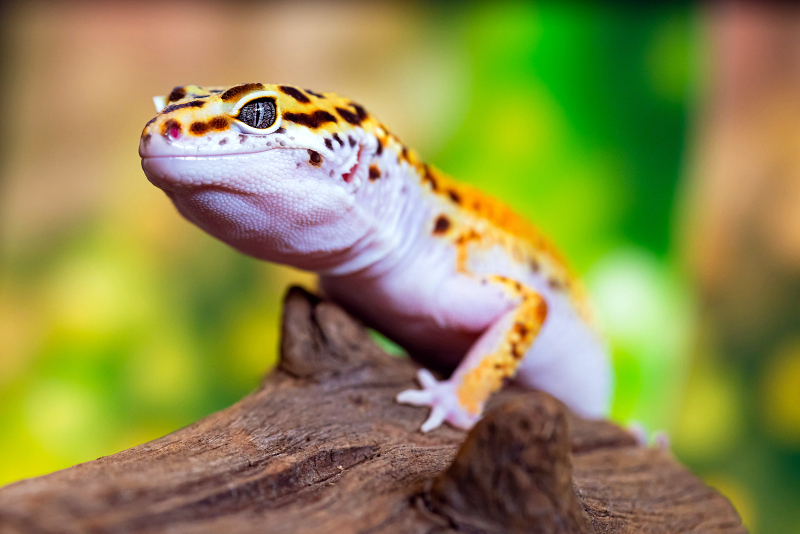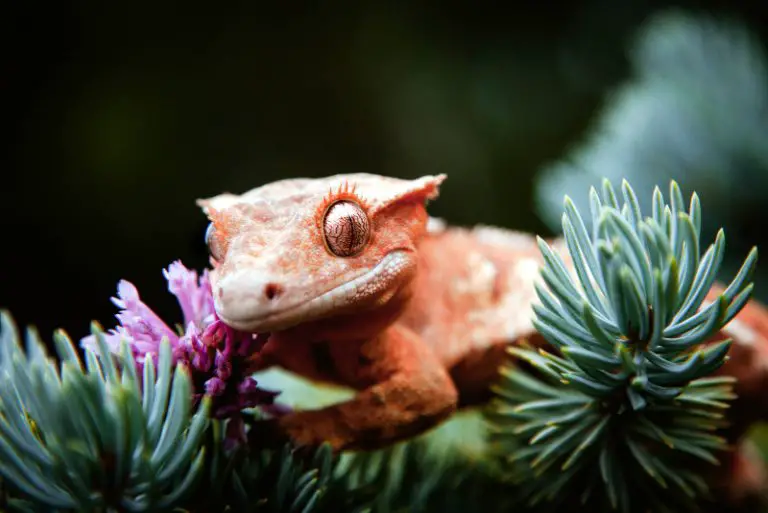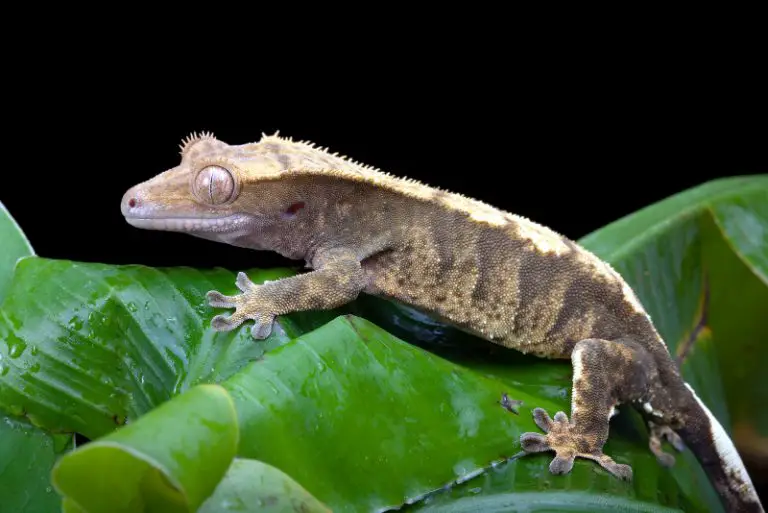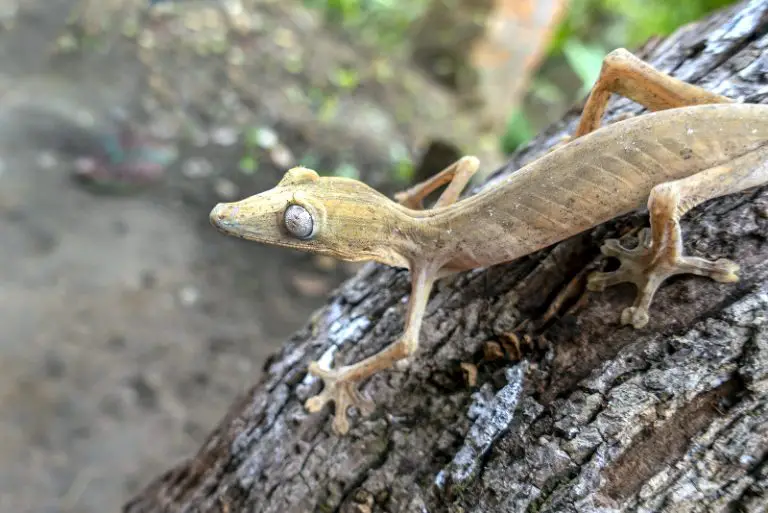Fat Tail Gecko Vs Leopard Gecko: Differences And Similarities

If you’re thinking of purchasing a new gecko, but aren’t sure what to get, this article can help you out. Are you stuck between the fat tail gecko and the leopard gecko? (Fat Tail Gecko Vs Leopard Gecko) We’ll show you the differences. They’re very similar lizard’s, but they have their key differences. We’ll help you figure out which one is right for you.

African fat tail geckos and leopard geckos are closely related, so this is why they closely resemble each other. They look so similar that they can easily be misidentified even by reptile experts. Some people think there is a fat tailed leopard gecko. But, the fact is, they’re really two different species.
The fat-tailed gecko and the leopard gecko both belong to the same subfamily, making them related. However, they are two distinct species.
Contents
Table of Contents
What Is A Fat Tail Gecko?
More specifically, we’ll call this gecko the African fat-tailed gecko, or Hemitheconyx caudicinctus. They live in African areas of higher humidity, primarily western Africa. They can be found in countries from Senegal to Nigeria and Cameroon. Fat-tailed geckos aren’t as popular as leopard geckos, although they look very similar.
However, they are becoming more popular as people are beginning to realize their wonderful traits. Still, there aren’t as many of these geckos available. It’s harder to find a breeder simply because people prefer the leopard gecko. Because they’re hard to find, they can also be more expensive than the leopard gecko. Unfortunately, this can put a lot of people off.
What Is A Leopard Gecko?

Leopard geckos, or Eublepharis macularius, like warmer, drier areas. They are native to areas of the middle east like Afghanistan, Pakistan, India, Iran, and Iraq.
These lizards are much more common and popular among lizard keepers. They seem to be very popular among both beginning and experienced reptile hobbyists.
Because they’re so popular, you won’t ever have trouble finding one in stores, and they are sold for a very fair price. One reason why they’re so much more popular is because they come in a wide range of colors and morphs. People have a larger variety of critters to choose from.
Similarities Between Fat Tail Gecko And Leopard Gecko
Both the fat tail gecko and the leopard gecko look very similar in appearance. Their body shape is very similar looking. They also share the same yellowish/cream color with dark spots or patterns.
They both have moveable eyelids which is uncommon in many lizard species. They lack the sticky pads lizards need to climb up surfaces. Instead, they have claws used to scuttle through desert-like terrains.
Watch this Fat Tail Gecko Vs Leopard Gecko video:
Differences Between Leopard Gecko And Fat Tail Gecko
Although these two gecko species have a lot in common, they also have plenty of differences.
Their Habitats
One key difference between these two lizard species is where they originate in the wild. The African fat tail gecko lives in…you guessed it. Africa.
The leopard gecko, on the other hand, is found in the middle east in countries like India, Afghanistan, Iraq, and Iran.
Care Needs
Because the two lizards live in two different habitats, it makes sense that they would have different cage needs.
Humidity & Temperature
The fat-tailed gecko needs significantly higher humidity than the leopard gecko. If they’re kept in an enclosure with low humidity, it can lead to dangerous health problems. The humidity in their enclosure should be kept between 70-80%. The temperature should be kept between 86-88 degrees Fahrenheit.
Leopard geckos prefer a lower to moderate humidity since they’re used to desert-like conditions in the wild. They prefer humidity between 30-40%.
They also need higher temperatures because they’re used to hot desert environments. They should be given a temperature gradient throughout their cage. At its hottest, a basking spot should be provided between 88-90 degrees Fahrenheit. At the coldest end, the enclosure shouldn’t be below 75-80 degrees Fahrenheit.
Food
When it comes to food, there isn’t much of a difference between the two. Both species are insectivores and need a variety of crickets, mealworms, and roaches.
Physical Differences
Size
Leopard geckos will usually be about 8-12 inches long and will weight between 40-100 grams as adults. Fat-tailed geckos, on the other hand, will only reach about 6-8 inches in length. Full grown, they will only weigh between 45-75 grams.
The Tail
Not only is the leopard gecko’s entire body longer than the fat-tailed gecko, but it’s tail is significantly longer in proportion to its body. This is one of the key differences that sets them apart.
Leopard geckos have long, thick tails. Fat-tailed geckos have short tails that are much fatter. The leopard gecko’s body overall is more slender than the fat-tailed geckos. Fat-tails have stockier bodies overall with large eyes and tiny feet.
Colors
Leopard geckos also come in more varieties than the fat-tailed gecko. There are several more morphs to choose from for leopard geckos than there is for fat-tailed geckos.
Fat-tailed geckos usually have a natural base color of beige or light brown. They will usually have stripes or bands that run down the length of their body. These are also usually in another brown color.
Leopard geckos, on the other hand, come in a wider variety of morphs and have been selectively bred for years. You can get these lizards in all different colors and patterns.
Read more about morphs here.
Their Personality
Although both species are quite docile and easy to handle, the fat-tailed gecko puts the leopard gecko to shame. The fat-tailed gecko is exceptionally shy and docile, preferring to hide from its caretakers.
It doesn’t like being handled very much unlike the leopard gecko who is quite likely to become friendly with its caretaker.
Taming
It is possible to tame your fat-tailed gecko and it can become quite comfortable around you. However, they tend to be much more skittish and afraid than leopard geckos. So, the fat-tailed gecko simply needs more time and patience to become used to its handler.
Once it’s become comfortable with its handler, they can make great companions as they are even more docile and gentle than the leopard gecko. However, this only applies while the gecko is outside of the cage.
The enclosure is your reptiles home. No reptile likes their home being invaded, but fat-tailed geckos can become particularly territorial. If you want to reach into their enclosure to pick them up, take care to go slow. Be gentle and non-threatening or you might get a small bite from your gecko.
While it is possible to tame your fat-tailed gecko, leopard geckos simply handle being handled better. While you can tame a fat-tailed gecko, they’re better as pets when they’re left to their own devices. We would recommend these to anyone who likes watching their lizard companions, but don’t necessarily enjoy handling them.
If you really enjoy working with your lizards, you’ll be better off getting a leopard gecko. They are not as territorial in their tanks, and they’re not as skittish. Overall, they’re just much easier to tame and will enjoy your company more.
Read more about handling leopard
Fat Tail Gecko Vs Leopard Gecko
Overall, if you’re new to the reptile hobby, you’re better off getting a leopard gecko. Leopard geckos require less care than fat-tailed geckos, mainly due to their environmental needs.
The fat-tailed gecko lives in more humid areas of the world, so it needs high humidity in captivity. To achieve this, you’ll likely need to mist the tank several times a day. This can be annoying if you’re not home often. In that case, you’ll need to purchase an automatic mister which can be a little pricy, but well worth it.
Another reason a leopard gecko is good for beginners is because they’re easier to handle. Now, the fat-tailed gecko could be better for beginners, depending on what they’re looking for. If they’re looking for a critter than can just admired from afar, then sure, the fat-tailed gecko could be a great option for them.
However, most beginners seem to want a lizard they can handle and bond with. Leopard geckos are far easier to tame. Fat-tailed geckos are much more skittish. It requires a lot more work and patience to be able to handle them.
Can You Keep Fat Tail Geckos And Leopard Geckos Together?
Fat-tailed geckos and leopard geckos absolutely should not be housed together. The primary reason being their differences in habitat requirements.
Leopard geckos need hot, dry environments, while fat-tailed geckos need cooler, humid environments. They cannot live together because of these differences. To please one animal, you would be causing the other to suffer. It is even likely that one or both animals would develop some kind of infection or disease.
Besides their habitat differences, it’s simply not a good idea to house them together. It’s usually frowned upon in the reptile community to house different species together because it’s not safe.
Both leopard geckos and fat-tailed geckos are territorial. If you house them both together, there’s almost bound to be a fight coupled with injuries.
It’s not even recommended to keep multiple of the same species together. Just don’t do it. If you’d like to own both of these species, it’s best to get each of them their own enclosures.
Conclusion
Leopard geckos and fat-tailed geckos are both great critters that make even better pets. They are part of the same family and have a lot of similarities, but they’re also quite different as well.
Their main differences come from their habitats and their personalities. Leopard geckos are more friendly while fat-tailed geckos are more fearful. Leopard geckos need hotter environments while fat-tailed geckos need more humid environments.
They both make great pets, but if you’re a beginner, the leopard gecko is likely the better option for you.
Want to learn more? Click here to find all our guides to geckos or click here to learn how to pet a leopard gecko.


![What Fruit Can Crested Geckos Eat? [Best Fruit]](https://allourcreatures.com/wp-content/uploads/2021/12/crested-gecko-768x513.jpg)
![How Often Do Crested Geckos Eat? [Full Guide]](https://allourcreatures.com/wp-content/uploads/2021/12/how-often-eat-crested-gecko-768x512.jpg)


